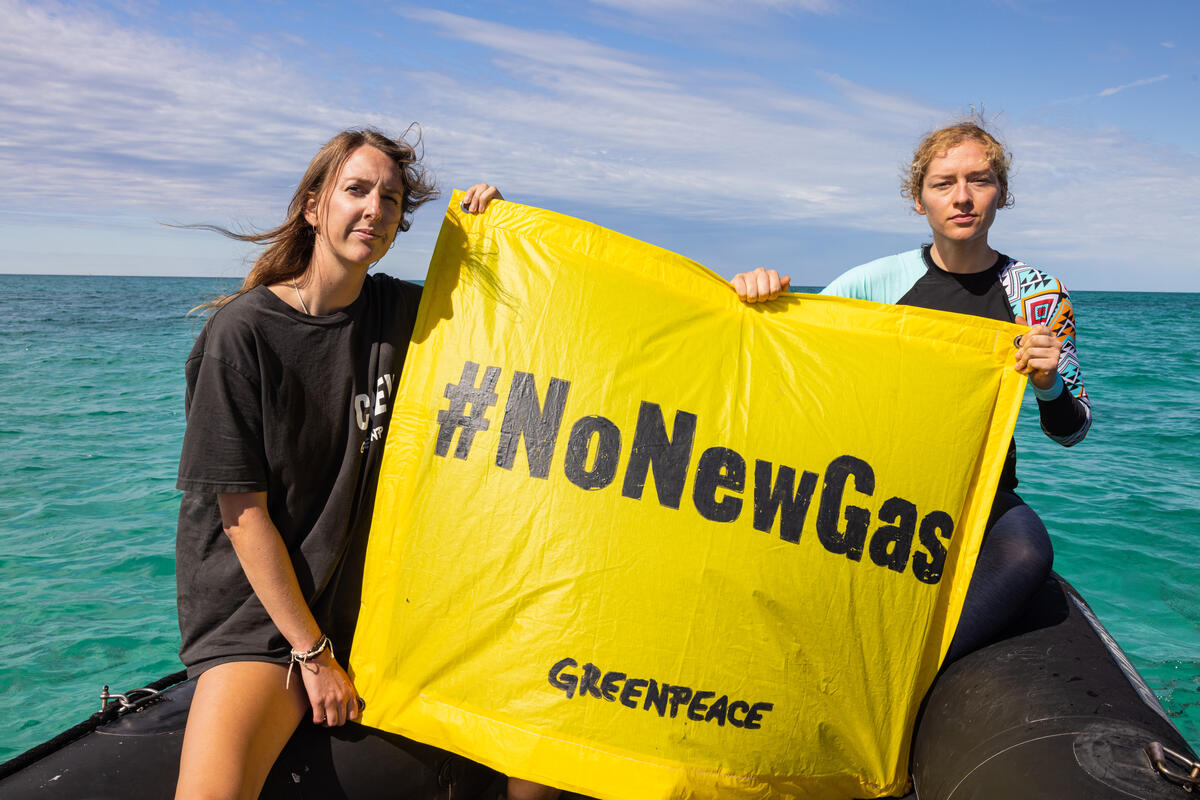Seismic testing for oil in the Arctic Barents Sea, commissioned by the Norwegian Petroleum Directorate has been stopped one month ahead of schedule 4 days after Greenpeace exposed it to the media.
But off the coast of Northland in New Zealand waters, Norwegian oil giant Statoil is due to begin seismic mapping to find oil this summer.
Seismic mapping is the first step of oil exploration. Before the oil rigs even arrive, before the drills go in the seabed, companies must first determine where to find the oil.
Seismic tests are done from a ship at the surface. An air gun shoots low-frequency sound pulses that penetrate the seafloor and the reflected sound waves are then recorded by sensors dragged on long cables after the ship. The data collected is used to map the seafloor so that oil companies can look for positions where they can drill for oil.
Sound travels extremely well under water and the noises from seismic vessels have been recorded thousands of kilometres away. Marine mammals depend on sounds to navigate and feed and they are incredibly vulnerable to these loud noises. The air gun shots are issued with an interval of less than a minute – sometimes over weeks or months – and they mean that animals like whales and dolphins are unable to hear one another or find food. In extreme cases, it could cause physical damage or severe disorientation that can lead to strandings and death.
Last week a tohora (sperm whale) stranded itself on Te Oneroa a Tohe (90 mile beach) and I went there to help the local people deal with the situation.
The Whale was named Waimoho which is the reflection you would see of yourself if you looked into the water … and it entreats us to examine ourselves in relation to events such as these. Waimoho was treated with much love and affection by all involved with its tangi (funeral rituals) and its spirit was sent forth with karakia (incantations) and waiata (ritual song).
It was understood by our ancestors that whales began life in sea and then moved onto to the land and then millennia later returned to the sea and that when a whale returns again to the land to die one of the rituals is to remove one of the eyes and return it to the ocean while the other remains on the land to signify this relationship so this was done.
It was really good to be of assistance to the local iwi during this time and it was an opportunity to work with local leaders through this process and raise the spectre of oil drilling during the evening discussions.
As a result we’ve trained up a local crew of flensers and the locals now know the importance of extracting the ears in the event that any other marine mammals strand over the summer.
Was this whale killed by seismic testing? Hopefully not, but we’re going to find out.
Pal Heremo of Statoil saying: said “Science is not always precise but in 40 years Statoil has been operating seismic surveys, studies carried out by independent scientists have not recorded any damage to marine mammals”.
But I’ve been asking around and Dr Lindy Weilgart – one of the world experts on the impact of sonar on whales and dolphins – reckons the argument from oil companies that seismic surveys haven’t been associated with dolphin or whale deaths is practically meaningless at best, or false, at worst”.
“Seismic surveys have been strongly tied to fatal whale, dolphin and giant squid strandings and deaths at sea. Of course, if you don’t look, you won’t see. Oil and gas companies do not undertake thorough surveys for whale and dolphin carcasses. Even if they did, only about 3% of dolphin carcasses are ever detected, as they sink or are eaten by predators.
Immediate deaths are not the only concern. Seismic surveys can cause dolphins to avoid important habitat, can interfere with their food-finding, reproduction, resting, and hearing sounds vital to their survival, and can cause stress effects. All these can have serious impacts on the welfare of these populations and the welfare of their prey”.
So aside from the risk of oil washing on our beaches and our ancestral fishing grounds being polluted or worse, it seems plain that there is a risk to our cetacean friends even before the drilling begins. Statoil have sent representatives to talk with Northland communities but have left in no doubt that they are unwelcome here, and that the people of Northland do not want deep sea oil drilling in our waters.
NOTE: Previously this blog contained reference to the noise of seismic testing being comparable to nuclear explosions but this is not a useful comparison because sound in air behaves differently to sound in water. We have therefore removed this comparison from the blog.


